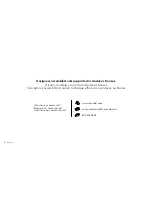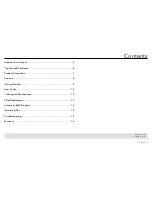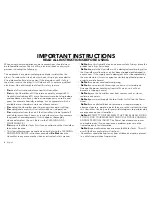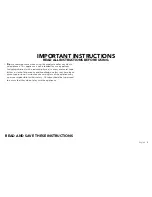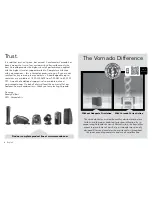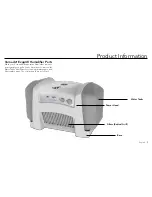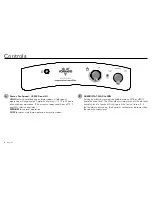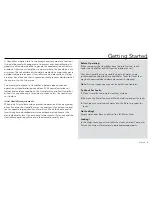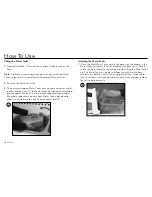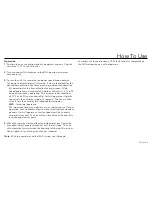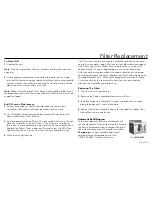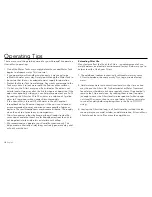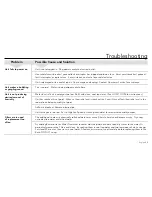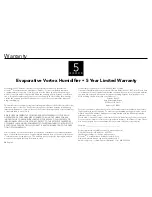
9
English
Before Operating
When removing the Humidifier from the retail carton, reach
under the Humidifier and lift from the bottom of unit.
Your new Humidifier uses a sizable volume of water, so we
recommend checking the Base and Water Tanks for leaks that
may have occurred due to damage caused in shipping.
Note:
A visual inspection may not reveal hairline fractures.
To Check For Leaks:
1.
Place Humidifier on a water-resistant surface.
2.
Remove the Water Tanks and fill with water to inspect for leaks.
3.
Next, pour several cups of water into the Base to inspect for
leaks.
Not Leaking?
Empty water from Base and install the full Water Tanks.
Leaking?
In the slight chance your Humidifier has leaks, contact Consumer
Services and we will immediately replace damaged parts.
A Humidifier is quite useful in supplying necessary moisture to dry air.
It should be used with proper care to prevent over-humidification. A
good rule of thumb would be to gauge the condensation or frost on
windows. Adjust your Humidifier to a point where this condition is at a
minimum. These adjustments should be made when major changes in
outdoor temperatures occur. Humidifiers can be placed in any living
area that has a location that is convenient and provides distribution of
the moist air to the living area.
The measured output of a Humidifier is based upon continuous
operation at standard rating conditions. With normal variations of
indoor and outdoor conditions, the Humidistat controlled Humidifier
will not run continuously, at maximum output, unless the controls are
set to do so.
Initial Humidity requirements:
When initially installed or when placed in operation at the beginning
of each season, the Humidifier may run constantly for a day or so and
thus evaporate large quantities of moisture. When the home and its
furnishings have absorbed moisture and become stabilized at the
desired humidity level, the amount of water used will diminish and the
Humidifier operation will maintain the desired humidity level.
Getting Started


